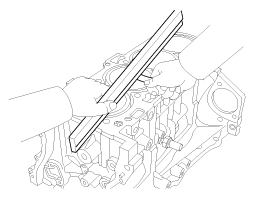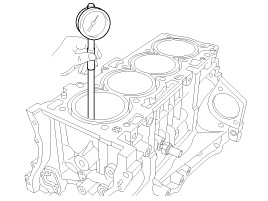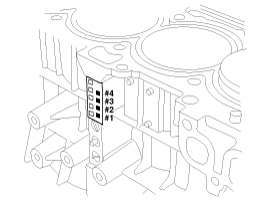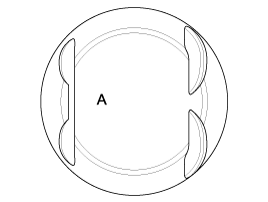Inspect top surface of cylinder block for flatness.
Using a precision straight edge and feeler gauge, measure the contacting surface of the cylinder block and the manifolds for warpage..
Flatness of cylinder block gasket surface
Standard : Less than 0.05 mm (0.0019 in.) for all
Less than 0.02 mm (0.0007 in.) for 100 mm (3.9370 in.) x 100 mm (3.9370 in.)




